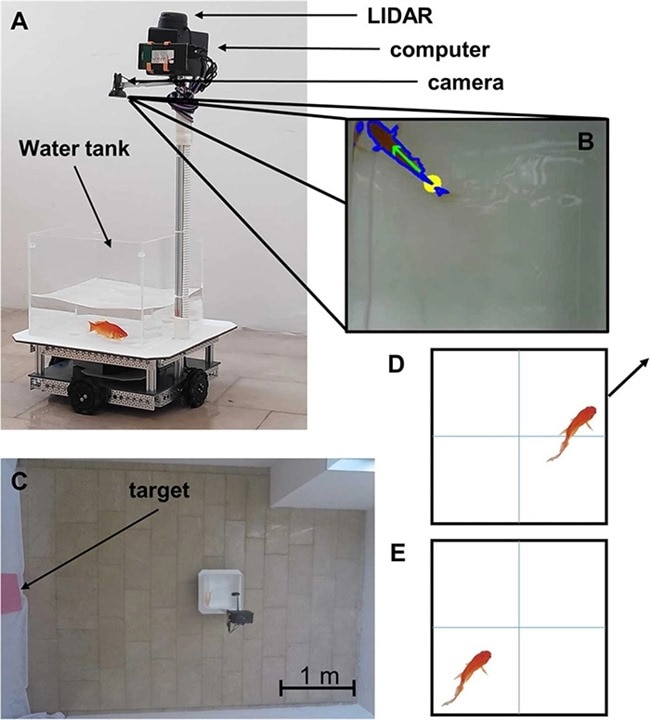
Just last year, Israeli researchers revealed that goldfish learned to drive fish tanks, achieved through fish-operated vehicles (FOVs) that had aquariums mounted atop motorized wheels. It also has a small camera connected to a Raspberry Pi to track the fish's movements, which were translated into wheel movements via a simple algorithm.
The team set a pink board in the room, and when the tank made contact with it, the fish was fed a pellet. Six days later, the fish learned to drive the tank toward the snack area and navigated from varying starting points. They also moved past false targets and redirected themselves after hitting a wall. Apparently, only Mr. Darcy and Mr. Bingley came out as the top FOV drivers.

The camera system tracks the fish's movement, which gets translated into wheel movement. (Image Credit: Givon et al., Behavioural Brain Research, 2021)
"After a few days of training, the fish navigated to the target," the team said. "Moreover, they were able to do so even if they were interrupted in the middle by hitting a wall, and they were not fooled by false targets placed by the researchers."
This research was conducted to determine if goldfish have logic in terms of navigating space. And the FOVs just allow them to move around in a non-aquatic area. So the only thing that matters is that the fish figures out how to reach its target via artificial target-finding points in the best way possible because it realizes it can find food in that particular area. Additionally, they moved toward their targets from different angles, meaning they could understand their external surroundings. The researchers' study acknowledges that human navigational capability has to do with internal mind mapping compared to figuring out the surrounding environment.
Have a story tip? Message me at: http://twitter.com/Cabe_Atwell
